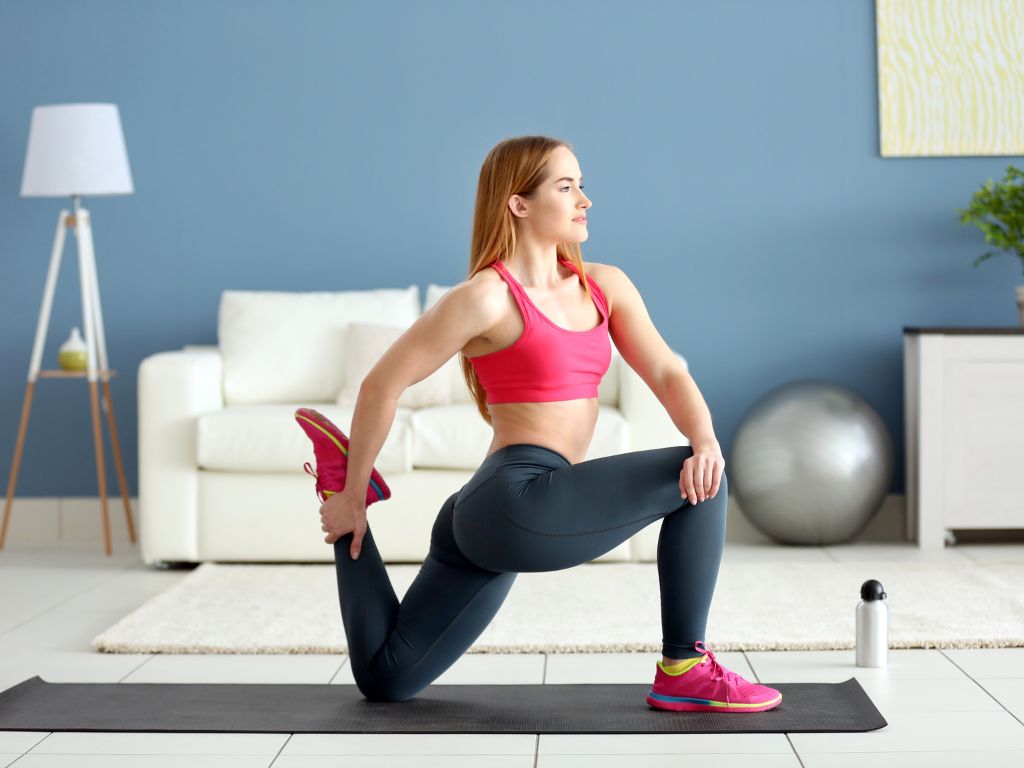This week, we had a look at what equipment you might need to pump up your glute exercises and get a stronger butt.
When it comes to home gym solutions, the same old bicep curls or rows, pull-downs and extensions aren’t the end-all be-all. When you have a specific goal, it’s good to narrow down your exercises and workout routine into something manageable. You don’t have to spend the big bucks for a bench package – just make sure you have the right equipment to meet your needs.
With that in mind, glutes! What are they?
To start off, your glutes are comprised of three muscles: gluteus maximus, gluteus medius and gluteus minimus. A glute exercise will usually activate all three muscles, which are key to many other exercises and general functionality.
If you’re someone who is seated a lot, or otherwise doesn’t exercise or engage your glutes regularly, you may find yourself feeling some lower-back pain or knee pain, as well as reduced balance and mobility. Specifically, you might have more fatigue while standing, struggle with stairs, slower reaction speed and overall have greater risk of injury.
You can read more about weak glutes and their risks here and here.

If you want to do something about your glutes, but you don’t know what, I’d recommend first talking to a PT. They know what they’re talking about. Not sure who to talk to? Send us an email or comment and we can help!
Why go to a PT, you might ask?
Great question. You never know what exercises suit you. If you have higher risk of knee injuries, you might want to swap out your bands for bodily resistance, as bands can negatively affect your knees in the long-term, despite giving stronger activation. It’s important to know what exercises suit your regimen first.

From here, we can figure out what exercises suit you.
There are a lot of exercises that you can perform to strengthen your glutes, most of which share muscle activation with other exercises.
Studies have shown that strength training involving external-loads such as deadlifts, lunges, squats, and hip thrusts, as well as functional fitness and mobility training like step-ups (and its variations) are your best options.
The heavier the weight, the more intense the activation. On top of that, you also want to have a larger range of motion, like deeper squats or lunges.
For those recovering from injuries, such a large range of motion might not be possible, so remember to do what your joints are most comfortable with.
Ultimately, the best glute exercises include your usual strength training like deadlifts, step-ups, squats, and lunges.
If you’re just starting off and aren’t looking to invest, I would recommend going with squats, lunges, and step-ups, as they don’t require much equipment nor commitment. You can do those from home without sacrificing space or money, just doing it on the floor or chair.
On the other hand, these studies also show that you need some sort of free weight to maximise your gains. Whether this is dumbbells, kettlebells, or bars and plates, they prove to be the most effective.
Our dumbbells are gym-quality, so feel free to check them out.

You can consider banded workouts as well, whether through Resistance Bands or Booty Resistance Bands. They replicate the resistance of a weight and are your budget versions. However, do remember to look out for the differences between each type.
For instance, you can strengthen your grip and stability with barbells, but can’t get the same flexibility of dumbbells and their wider range of weights. Meanwhile, bands are easier to store and move, but can also compromise your joints if not researched beforehand, as described above.
If you think you want to switch things up and make sure you’re getting the most out of your booty workout, we’re recommend three items: Jump Ropes, Booty Resistance Bands and Plyo Boxes.
Why?
Jump ropes require you to jump continuously, and if you’re doing double jumps or other technically advanced variations, you’re putting your glutes through an intense workout. The ropes are easy to store and are lightweight and will also net you a full-body cardio workout.
On the other hand, Booty Resistance Bands will help you maximise activation and increase resistance without needing to dump your savings into a single workout. They’re versatile and easy to manage. You can do a lot with them, not just glute workouts, and come with their own carry bag.
Finally, Plyometric Boxes are the kings of explosive training. They allow step-ups, box jumps and other functional movements that involve using body weight and your own maneuverability. You can even get creative, reusing it for rows and other seated variations. They also come in three heights.
Ultimately, your glutes are essential to all exercises and your overall mobility. Don’t forget to keep your glutes’ health in mind, whatever goal you have!
Thanks for reading!






Leave a comment